In the bustling landscape of childhood, where every moment is a new adventure, the significance of nutrition cannot be overstated. As parents, caregivers, and educators, we are responsible for ensuring that the young minds and bodies we nurture are fueled by the very best: wholesome, nutritious food. In this introduction to healthy food for kids, we embark on a journey to explore the vital role of nutrition in shaping the wellbeing of our children.
Healthy food lays the foundation for robust physical and mental development in children. A balanced diet of essential nutrients fuels their growing bodies and supports cognitive function and emotional wellbeing. Each food group offers essentials for good health, from the crisp sweetness of fruits to the earthy goodness of vegetables.
In today’s fast-paced world, where convenience often trumps nutrition, instilling healthy eating habits in children is more important than ever. Introducing youngsters to a colorful array of whole foods early on empowers them to make informed decisions and cultivate a lifetime appreciation for providing fare. Moreover, exposing children to diverse flavors and textures from an early age cultivates adventurous palates and fosters a positive relationship with food.
Nutrition education is not solely the responsibility of parents; it is a collective effort that involves schools, communities, and policymakers. By integrating nutrition curriculum into school programs and advocating for policies prioritizing access to fresh, wholesome ingredients, we can create environments supporting healthy eating habits for all children, regardless of socioeconomic background.
Yet, fostering a love for healthy food for kids goes beyond mere education; it encompasses the joy of shared meals and the cultural richness of culinary traditions. By involving children in meal preparation and celebrating food as a means of sustenance and communication, we impart invaluable life skills and reinforce positive associations with eating.
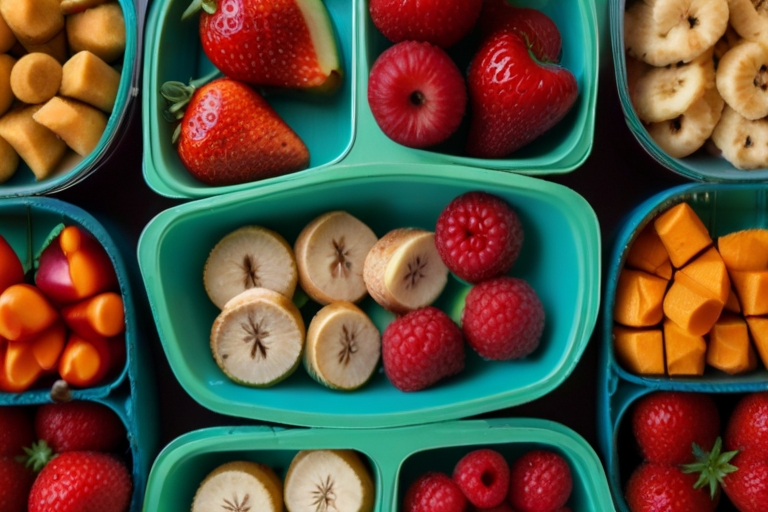
Understanding the Importance of Healthy Food for Kids
Ensuring that children consume healthy food is paramount for their wellbeing and development. The significance of healthy food for kids cannot be emphasized because it is essential to their growth, cognitive development, and overall health.
Nutrition serves as the building block for children’s growth and development. Sufficient consumption of vital nutrients, including vitamins, minerals, proteins, and carbohydrates, is crucial during their formative years. These nutrients support healthy bone development, cognitive function, immune system strength, and overall physical growth. A balanced diet provides the groundwork for the best possible growth. And ensures that children reach their full physical and mental potential.
Poor dietary habits in children can lead to a myriad of health issues. Obesity, malnutrition, and micronutrient deficiencies are among the common health problems associated with unhealthy eating patterns. Overindulgence in processed foods high in sugar and salt. A balanced diet provides the groundwork for the best possible growth. And increase the risk of developing chronic conditions such as diabetes, heart disease, and hypertension at an early age. Additionally, inadequate intake of essential nutrients can impair immune function, hinder cognitive development, and impact academic performance.
Healthy eating practices are essential for laying the groundwork for long-term wellbeing and health. Young children exposed to various nutrient-dense foods are more likely to grow up to adopt healthy eating practices. Parents and other caregivers can teach healthy eating habits by promoting the intake of dairy products, fruits, veggies, nutritious grains, lean meats, and a lifelong appreciation for wholesome foods. These habits promote physical health, foster positive relationships with food, and cultivate a healthy attitude toward nutrition.
Moreover, the benefits of healthy food for kids eating habits extend beyond childhood into adulthood. Research suggests that individuals who maintain a nutritious diet are less prone to chronic illness development later. By prioritizing healthy food choices early on, parents may lessen their children’s future risk of heart disease, diabetes, obesity, and other health issues.
In conclusion, understanding the importance of healthy food for kids is crucial for promoting their overall health and wellbeing. Parents can support their growth, development, and long-term health outcomes by providing children with nutritious meals and instilling healthy eating habits early. Investing in healthy food choices for children today guarantees future generations a healthier and more promising future.
Healthy Fast Food for Kids: Making Nutritious Choices

In today’s fast-paced world, finding healthy food for kids meals can be challenging, especially regarding fast food. With so many tempting choices loaded with sugar, salt, and unhealthy fats, parents often find themselves torn between convenience and nutrition. However, making nutritious choices for kids at fast-food restaurants is possible with some knowledge and planning.
First and foremost, parents should prioritize balanced meals and include a variety of food groups. Look for options incorporating lean protein, whole grains, fruits, and vegetables. For example, consider grilled chicken wraps, salads with lean protein toppings, or entire grain sandwiches with plenty of veggies instead of a burger and fries.
When it comes to beverages, water should always be the first choice. Avoid sugary sodas and fruit juices, often high in added sugars and calories. Many fast-food restaurants now offer milk or low-fat milk as alternatives, which can provide essential nutrients like calcium and vitamin D without excess sugar.
Portion control is another crucial aspect of making healthy choices at fast-food restaurants. Many meals come in oversized portions that can easily exceed a child’s calorie needs for an entire day. Consider ordering smaller portions or sharing meals to avoid overeating. Additionally, skip the supersized options and opt for smaller servings of sides like fries or chips.
Another strategy for making healthier fast-food choices for kids is to be mindful of hidden ingredients and additives. Many fast-food items contain hidden sources of sodium, sugar, and unhealthy fats. Be on the lookout for items labeled as “crispy,” “battered,” or “breaded,” as these often indicate deep-frying, which adds extra fat and calories. Instead, choose grilled, baked, or steamed options whenever possible.
It’s also essential to involve kids in the decision-making process regarding food choices. Educate them about the importance of healthy food for kids and eating a balanced diet and encourage them to make healthier choices when ordering at fast-food restaurants. Teach them to look for items that include fruits, veggies, and whole grains and restrict items heavy in added sugars and unhealthy fats.
Finally, customize orders to fit your child’s preferences and dietary needs. Many fast-food restaurants offer customizable options that allow you to modify ingredients or adjust portion sizes. Take advantage of these options to create meals tailored to your child’s taste preferences and nutritional requirements.
List of healthy fast food options suitable healthy food for kids
1. Grilled Chicken Wrap: Crafted with tender grilled chicken strips nestled within a whole wheat wrap, it’s a wholesome treat. Fresh lettuce and ripe tomato add color and crispness, while a light dressing ties it together. Taste every bite for the perfect harmony of flavors and textures.
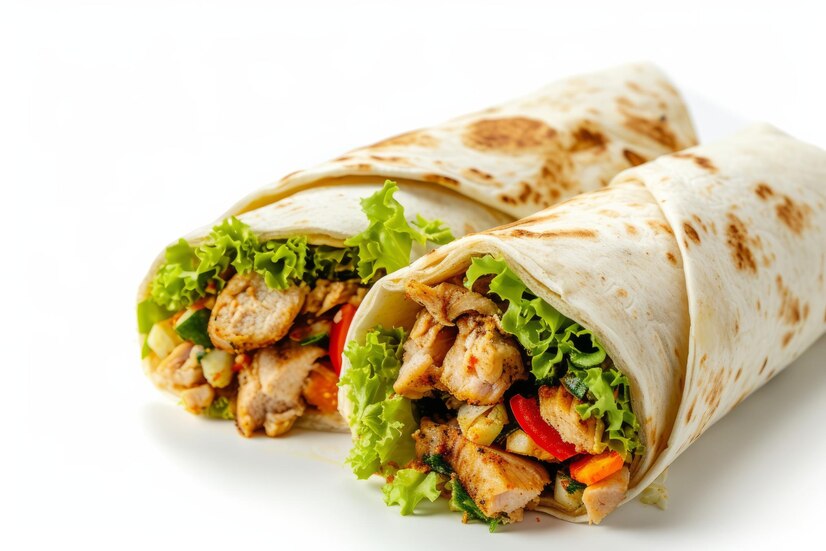
2. Veggie Burger: a delicious and nutritious option for kids’ meals. Brimming with healthful components such as legumes, veggies, and whole grains, it offers a tasty alternative to traditional burgers. With its vibrant colors and flavorful taste, this healthy food for kids will surely be a hit at mealtime.
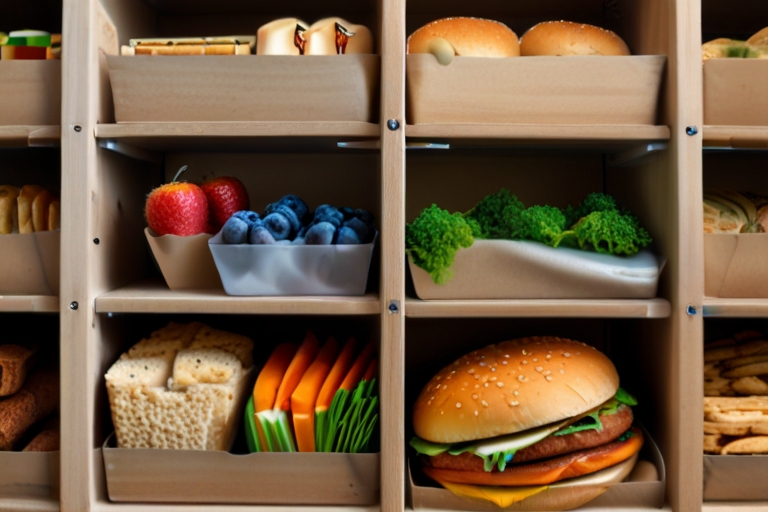
3. Fruit and Yogurt Parfait: Fruit and Yogurt, A tasty combination of fresh fruit, creamy yogurt, and crunchy cereal, is called a parfait. Granola offers a healthy fast food option for healthy food for kids. Packed with vitamins and nutrients, it satisfies cravings while promoting wellbeing. Its vibrant appearance and delectable flavor make it a favorite among health-conscious families on the go.
4. Grilled Chicken Nuggets: Bite-sized pieces of grilled chicken breast served with carrot sticks or apple slices. Grilled Chicken Nuggets offer a delightful twist on a beloved classic, providing a nutritious option for kids. Bursting with protein and flavor, these healthy bites make mealtime enjoyable while promoting wholesome eating habits for children.
5. Turkey and Cheese Sandwich: Sliced turkey breast and low-fat cheese on whole wheat bread, with lettuce and mustard for flavor. A Turkey and Cheese Sandwich is a wholesome choice for kids, combining lean protein with calcium-rich cheese. Packed with nutrients, it’s a delicious and nutritious option among healthy foods for kids.
6. Hummus and Veggie Platter: Creamy hummus served with baby carrots, cucumber slices, and whole grain pita bread for dipping. Creamy hummus pairs perfectly with crisp vegetables on a vibrant platter, offering a nutritious and satisfying snack or appetizer option.

7. Baked Sweet Potato Fries: Crispy sweet potato A healthy take on classic fries is to bake them in the oven. Compared to regular fries, baked sweet potato fries are a more nutritious option. Inside, it is soft and brimming with organic sweetness. Perfect for guilt-free snacking!
8. Smoothie Bowl: A smoothie bowl is a delightful blend of fresh fruits, vegetables, and other nutritious ingredients, topped with granola, nuts, and seeds, creating a vibrant and deliciously satisfying meal or snack.
These options balance protein, carbohydrates, and essential nutrients to fuel kids’ bodies and keep them satisfied.

Healthy Food Ideas for Kids
Ensuring children have a balanced and nutritious diet is essential for their growth and development. One of the critical aspects of this is incorporating healthy food for kids that they will enjoy. Starting with adding a range of fruits and vegetables to daily meals to fun and nutritious ideas for snacks, there are lots of ways to make eating healthily enjoyable for kids.
Firstly, it’s crucial to emphasize the importance of fruits and vegetables in a child’s nourishment. These nutrient-dense foods include vital minerals, vitamins, and fiber for their health. To make it appealing:
- Involve children in selecting and preparing fruits and vegetables.
- Please bring them to the farmer’s market or grocery shop. And let them choose their favorites.
- Please encourage them to help with washing, chopping, and arranging colorful fruits and vegetables on their plates.
Incorporating them into fun shapes or arranging them into a rainbow can make mealtime more exciting and enticing.
Additionally, incorporating fruits and vegetables into smoothies, soups, and pasta sauces is a great way to get extra nutrients. Blend a mix of fruits like berries and bananas; bring them to the farmer’s market or grocery shop. Similarly, add pureed vegetables like carrots, sweet potatoes, or squash to pasta sauces or soups for added flavor and nutrition.
When it comes to snacks, it’s important to offer options that are both tasty and nutritious. Instead, choose complete foods such as fruits, vegetables, nuts, and seeds of manufactured foods heavy in bad fats and sugar. For a fun twist, create snack kabobs by threading fruits like strawberries, grapes, and pineapple onto skewers. Pair them with a yogurt or nut butter dip for added protein and flavor.
Another idea is to make a homemade trail mix combining nuts, seeds, dried fruits, and whole-grain cereals. This provides a satisfying and energy-boosting snack for kids throughout the day. For a savory option, try some seasoned air-popped popcorn with herbs and spices, like garlic powder, paprika, or nutritional yeast.
When it comes to meals, simple yet flavorful recipes are vital to ensuring children enjoy their food. Opt for kid-friendly dishes like homemade pizza loaded with colorful vegetables, whole-grain pasta with a homemade tomato sauce packed with veggies, or grilled chicken grilled sweet potato and green bean kebabs.

Incorporating herbs and spices like garlic, basil, cinnamon, and ginger can enhance the flavor of dishes without relying on added salt or sugar. Encourage children to get creative in the kitchen by letting them help with meal preparation and allowing them to choose their favorite ingredients.
Overall, by incorporating a variety of fruits and vegetables into daily meals, offering fun and nutritious snack ideas, and preparing simple yet flavorful recipes, it’s possible to provide children with healthy food for kids options that they will love. Making eating healthy a positive and enjoyable experience from a young age sets the foundation for lifelong habits and promotes overall wellbeing.
Navigating Picky Eaters: Strategies for Introducing Healthy Food For Kids
Navigating picky eaters can be challenging for parents and caregivers, but understanding the underlying reasons for this behavior can open the door to efficient strategies for introducing healthy foods to children. When fostering a love for nutritious options, the focus keyword healthy food for kids becomes pivotal. Here’s a comprehensive guide on navigating picky eaters while prioritizing incorporating healthy food for kids into their diets.
Understanding the Reasons Behind Picky Eating Behavior
Picky eating behavior in children can stem from various factors, including sensory sensitivities, texture aversions, fear of new foods, or even a desire for control. Acknowledging these reasons, caregivers can approach the situation with empathy and patience, creating a conducive environment for introducing healthier alternatives.
Techniques for Gradually Introducing New Foods
One effective strategy for introducing healthy food for kids to picky eaters is the gradual exposure method. Begin by introducing tiny amounts of novel foods alongside familiar favorites during meals. Encourage children to explore these new foods through sensory experiences like touching, smelling, and tasting. Increasing exposure can help desensitize aversions and cultivate acceptance over time.
Another technique is to incorporate healthy ingredients into familiar dishes. For instance, blend vegetables into pasta sauces or smoothies or use whole-grain flour in baking recipes. This stealthy approach allows children to enjoy the flavors they’re accustomed to while benefiting from the nutritional boost of added ingredients.
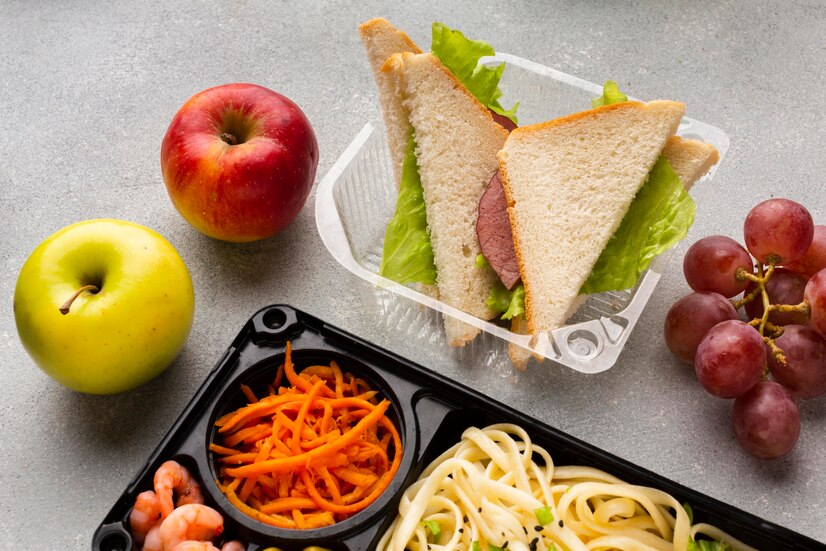
How to Involve Children in Meal Planning and Preparation
Empowering children to participate in food preparation and planning can encourage a feeling of ownership and enthusiasm toward healthier eating habits. Please enable them to join grocery shopping trips, where they can select fruits, vegetables, and other nutritious items. Involving them in meal preparation tasks, such as washing, chopping, or assembling ingredients, teaches valuable life skills and makes them more invested in the outcome.
Additionally, consider implementing a “try new foods” challenge or game where children can explore unfamiliar options in a fun and non-threatening manner. Create a reward system or praise their efforts to incentivize adventurous eating behaviors.
By implementing these techniques in everyday routines, caregivers can progressively broaden their children’s palates and establish enduring habits of consuming nutritious foods. A friendly and upbeat environment is essential to keep in mind; pressure or coercion should be avoided since forcing foods may cause resistance to grow.
In conclusion, navigating picky eaters requires patience, understanding, and creative approaches. By addressing the reasons behind fussy eating behavior, gradually introducing new foods, and involving children in meal planning and preparation, caregivers can foster a positive relationship with healthy food for kids. With persistence and encouragement, every small step towards expanding their culinary horizons can lead to a lifetime of nutritious eating habits.
Overcoming Challenges: Dealing with Food Allergies and Dietary Restrictions
In today’s world, where culinary diversity is celebrated, children with food allergies and dietary restrictions face unique challenges. Recognizing common food allergies in children is crucial for their wellbeing. Allergies to peanuts, dairy, eggs, soy, wheat, and shellfish are among the most prevalent. Managing these allergies involves:
- Diligent label reading.
- Clear communication with caregivers.
- Creating safe environments where cross-contamination risks are minimized.
Accommodating dietary restrictions without sacrificing taste or nutrition is a balancing act. The focus keyword healthy food for kids becomes paramount. Fortunately, there are numerous strategies to ensure that children with dietary limitations still enjoy delicious and nutritious meals. For example, substituting allergens with alternatives such as plant-based milk, gluten-free grains, or egg replacers can maintain the integrity of recipes while meeting dietary requirements.

Moreover, incorporating a variety of fruits, vegetables, lean proteins, and whole grains ensures that children receive essential nutrients despite dietary restrictions. Experimenting with herbs, spices, and flavorful sauces can enhance the taste of dishes, making them appealing to even the pickiest eaters. Caregivers can promote healthy food for kids eating habits by prioritizing nutrient-dense ingredients while accommodating dietary needs.
Creating inclusive meal options for children with diverse dietary needs fosters a sense of belonging and ensures no child feels left out during meal times. This inclusivity extends beyond the home to schools, social gatherings, and restaurants. Collaboration with food service providers to offer allergen-free alternatives and clearly labeling menu items can make dining out stress-free for families managing food allergies.
In educational settings, raising awareness about food allergies and teaching children to respect their peers’ dietary needs cultivate empathy and understanding. Open communication among students, teachers, and parents facilitates a nurturing setting where kids of all ages can participate in food-related activities without fear or exclusion.
In conclusion, navigating food allergies and dietary restrictions in children requires vigilance, creativity, and compassion. By recognizing common allergies, accommodating nutritional needs without compromising taste or nutrition, and promoting inclusivity in meal options, caregivers can empower children to enjoy a wide variety of healthy foods. Ultimately, prioritizing the keyword healthy food for kids ensures that all children can thrive and flourish regardless of dietary restrictions.
The Importance of Role Modeling: Setting a Positive Example for Healthy Food For Kids
Role modeling is pivotal in shaping children’s behaviors and habits, especially regarding healthy eating. Parents and caregivers serve as primary influencers in a child’s life, and their own dietary choices can significantly impact those of their offspring. By setting a positive example through their eating habits, adults can instill lifelong values of nutrition and wellness in young minds.
Children are keen observers, often mirroring the behaviors they witness at home. Children follow suit if parents consistently opt for nutritious foods and demonstrate enthusiasm for wholesome meals. Conversely, if unhealthy eating habits are prevalent in the household, children may adopt similar patterns, leading to potential health issues later in life. Parents must be know about healthy food for kids and then they will teach kids about this.
Incorporating family mealtime rituals further reinforces the importance of healthy food for kids . Sitting down together for meals provides bonding and communication while emphasizing the value of shared experiences around food. Parents can instill a sense of ownership and appreciation for nutritious foods by prioritizing mealtimes and involving children in meal preparation.
Additionally, parents can educate children about the benefits of healthy food for kids and eating in an age-appropriate manner. Rather than simply dictating what foods are “good” or “bad,” engaging children in conversations about nutrition and its impact on overall wellbeing is essential. For younger children, this may involve using simple language to explain how fruits, vegetables, and Whole grains offer vital minerals and vitamins that support them to grow strong and stay healthy. As children grow older, discussions can include topics such as the importance of balanced diets, the role of different food groups, and how dietary choices can affect energy levels and performance.
Make wise dietary decisions and give their health and wellbeing priority. Establish the groundwork for a lifetime of balanced eating habits. Moreover, they can shape their children’s physical health, attitudes, and relationships with food. Through consistent role modeling, family mealtime rituals, and age-appropriate education, adults can empower children to make well-informed dietary decisions and prioritize their health and wellbeing. In doing so, they contribute to cultivating a healthier, happier generation.

Cultivating a Healthy Food Environment: Creating Habits That Last a Lifetime
Promoting healthy food for kids eating habits in children is paramount for their wellbeing and development. Creating a conducive home and community environment can instill lifelong habits centered around nutritious choices. Here are some effective strategies, focusing on the keyword “healthy foods for kids,” to cultivate a healthy food environment:
Organizing Pantry and Fridge: Healthy Food For Kids
- Start by organizing your pantry and fridge to display healthy options prominently.
- Fresh produce should always be at eye level. , making them the first snack choice.
- Store sugary or unhealthy snacks in less accessible areas or replace them with healthier alternatives.
Labeling shelves with colorful signs “healthy food for kids” can also serve as a visual reminder to make nutritious choices.
Encouraging Physical Activity: Alongside healthy eating, physical activity is crucial for children’s development. Encourage outdoor play and regular exercise as part of their daily routine. Organize fun activities such as bike rides, nature walks, or sports games that promote movement and enjoyment. Emphasize staying active while reinforcing the relationship between exercise and preserving a healthy weight.
Building a Supportive Community: Necessary Healthy Food For Kids
- Foster a supportive community of peers and educators who reinforce healthy food for kids messages.
- Collaborate with schools, childcare centers, and other community organizations to promote nutrition education and provide resources for parents.
- Organize workshops, cooking classes, or gardening projects involving children growing and preparing healthy foods.
- Give kids the chance to talk about their experiences. And recipes, fostering a sense of pride and ownership in their healthy habits.
By implementing these strategies, we can create an environment where healthy choices are typical for children. Emphasizing the keyword “healthy food for kids” in our approach ensures a focus on nutritious options that support their growth and development. Let’s empower our children to make lifelong habits that promote health and wellbeing together.

Importance Of Healthy Food For Kids :
Healthy food for kids is crucial for their overall growth and development. From physical health to cognitive function, the significance of nutritious meals cannot be overstated. Here’s why focusing on healthy food for kids is paramount:
1. Nutrient-Rich Diets: Healthy food for kids provides essential nutrients like vitamins, minerals, proteins, and carbohydrates necessary for their growth. Incorporating fruits, vegetables, whole grains, lean proteins, and dairy products ensures they receive a balanced diet, supporting optimal development.
2. Physical Well-being: A diet rich in healthy foods strengthens children’s immune systems, reducing the risk of illnesses and infections. Moreover, it promotes healthy weight management, lowers the likelihood of chronic diseases like obesity, diabetes, and heart disease, and fosters better physical stamina and energy levels.
3Cognitive Development: Proper nutrition is vital to children’s cognitive development. Nutrient-dense foods fuel their brains, enhancing concentration, memory, and learning abilities. Omega-3 fatty acids in foods like fish contribute to brain development, improving cognitive function and academic performance.
4. Behavior and Mood Regulation: Healthy food for kids positively impacts their behavior and mood. Studies have linked balanced diets to reduced hyperactivity, irritability, and mood swings.
5. Establishing Lifelong Habits: By consistently offering nutritious meals and snacks, parents and caregivers instill an appreciation for wholesome foods, reducing the likelihood of unhealthy eating patterns and food-related issues in adulthood.
In conclusion, prioritizing healthy food for kids is paramount for their health and well-being. Parents and caregivers support children’s physical growth, cognitive development, emotional stability, and long-term health by providing nutrient-rich diets. Investing in nutritious meals benefits children in the present and sets them up for a lifetime of good health habits.

In conclusion, prioritizing healthy food for kids is paramount for their wellbeing and development. As this discussion has illuminated, the impact of nutrition on children’s physical health, cognitive function, and emotional stability cannot be overstated. Caretakers and parents establish a solid basis for lifelong health by fostering eating habits from a young age.
One of the key take aways is the crucial role of balanced nutrition in supporting children’s growth and development. Foods high in nutrients supply the necessary vitamins, minerals, and other nutrients for healthy bodily development, mental maturation, and immune system operation. Parents may support their children’s growth today and in the future by ensuring they have access to a range of healthful grains, fruits, vegetables, lean meats, and healthy fats for healthy food for kids .
Moreover, promoting healthy eating habits early on can help prevent many health problems later in life. Research has shown that childhood dietary patterns significantly influence long-term health outcomes, including the risk of diabetes, heart disease, obesity, and other long-term illnesses. , parents may equip their children to live healthy adult lives by assisting kids in choosing wholesome foods, supporting them in making wholesome eating decisions and cultivating a healthy connection with food.
Additionally, it’s essential to recognize the broader societal impact of promoting healthy food for kids. Investing in initiatives that improve access to nutritious foods in schools, communities, and households can address inequities in health outcomes and encourage fairness in the wellbeing of children. In this endeavor, education is essential because it provides parents, caregivers, and kids with the information and abilities they need. To make healthy choices.
Prioritizing healthy food for kids is not just a matter of personal preference; it’s a fundamental investment in our children’s and society’s future. By providing children with the nourishment they need to thrive, we set them on a path towards a lifetime of health and happiness. Let us champion the importance of healthy eating for children everywhere, ensuring that each child can realize their most significant potential.







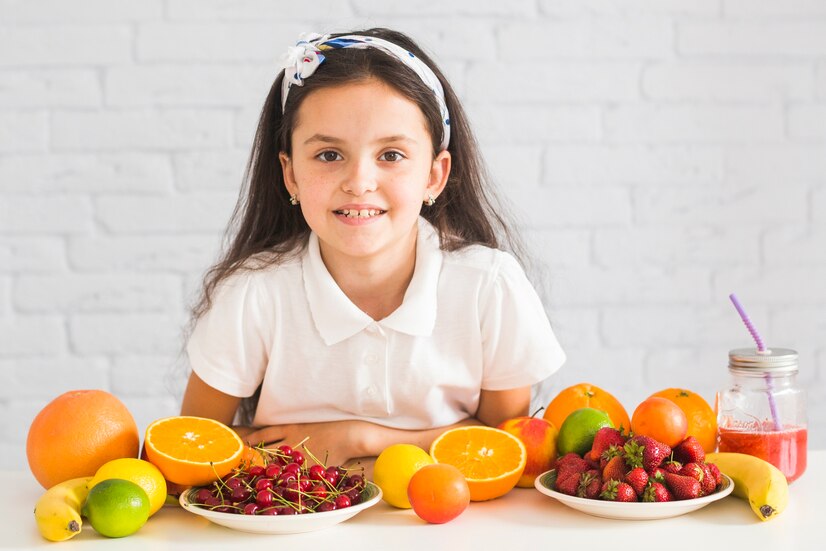






Leave a Reply
View Comments